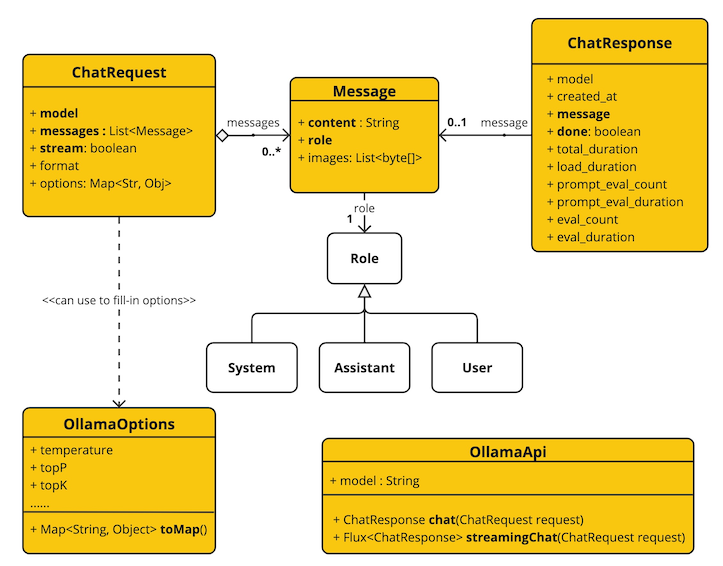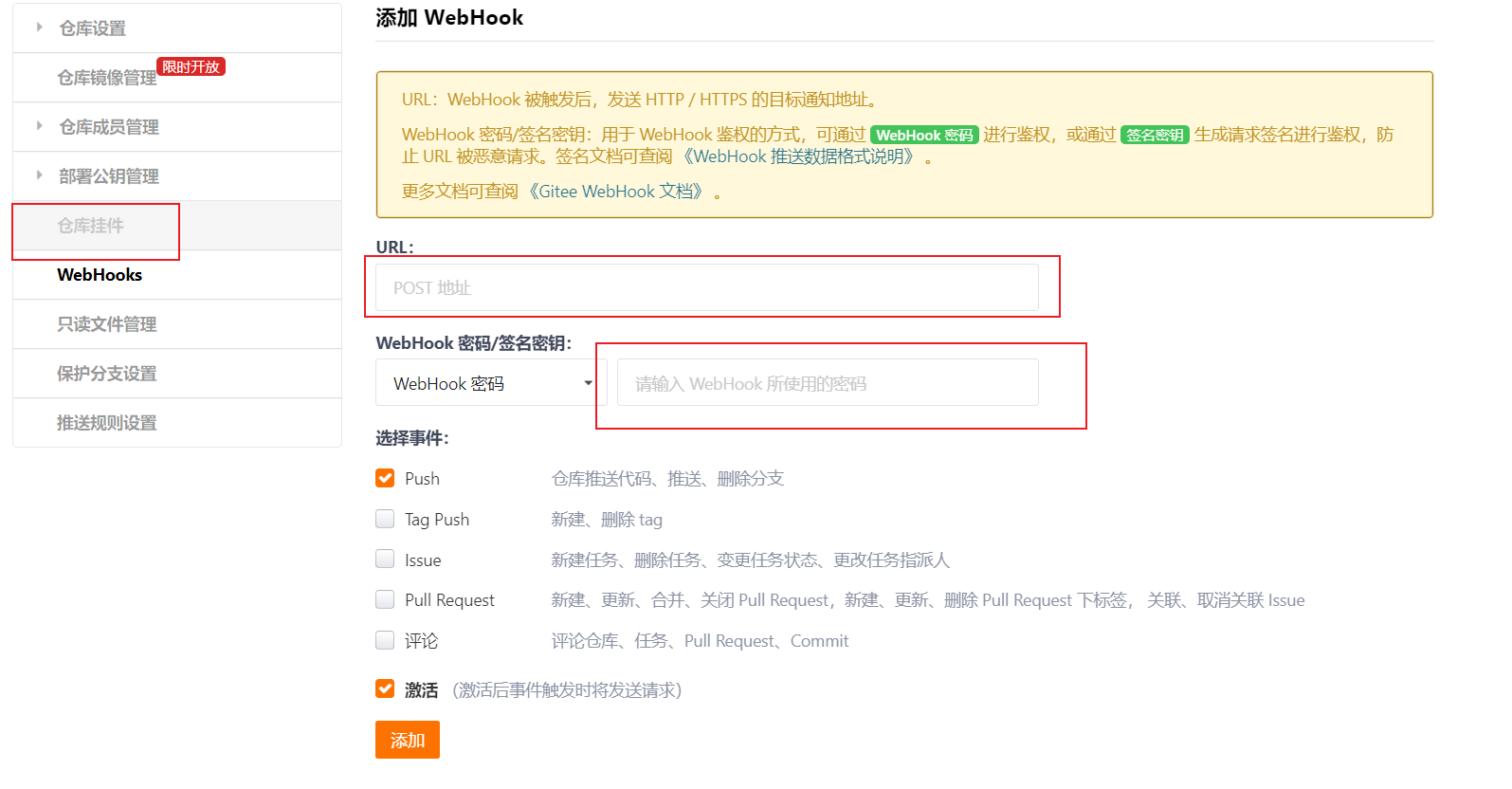SpringBoot整合SpringCache
1、引入依赖
<dependency>
<groupId>org.springframework.boot</groupId>
<artifactId>spring-boot-starter-cache</artifactId>
</dependency>2、引入redis依赖
<dependency>
<groupId>org.springframework.boot</groupId>
<artifactId>spring-boot-starter-data-redis</artifactId>
</dependency>配置redis地址密码等等,可参考springboo整合redis
3、默认配置
自动配置
//
// Source code recreated from a .class file by IntelliJ IDEA
// (powered by FernFlower decompiler)
//
package org.springframework.boot.autoconfigure.cache;
import java.util.List;
import java.util.stream.Collectors;
import org.springframework.beans.factory.InitializingBean;
import org.springframework.beans.factory.ObjectProvider;
import org.springframework.boot.autoconfigure.AutoConfigureAfter;
import org.springframework.boot.autoconfigure.condition.ConditionalOnBean;
import org.springframework.boot.autoconfigure.condition.ConditionalOnClass;
import org.springframework.boot.autoconfigure.condition.ConditionalOnMissingBean;
import org.springframework.boot.autoconfigure.data.couchbase.CouchbaseDataAutoConfiguration;
import org.springframework.boot.autoconfigure.data.redis.RedisAutoConfiguration;
import org.springframework.boot.autoconfigure.hazelcast.HazelcastAutoConfiguration;
import org.springframework.boot.autoconfigure.orm.jpa.EntityManagerFactoryDependsOnPostProcessor;
import org.springframework.boot.autoconfigure.orm.jpa.HibernateJpaAutoConfiguration;
import org.springframework.boot.context.properties.EnableConfigurationProperties;
import org.springframework.cache.CacheManager;
import org.springframework.cache.interceptor.CacheAspectSupport;
import org.springframework.context.annotation.Bean;
import org.springframework.context.annotation.Configuration;
import org.springframework.context.annotation.Import;
import org.springframework.context.annotation.ImportSelector;
import org.springframework.core.type.AnnotationMetadata;
import org.springframework.orm.jpa.AbstractEntityManagerFactoryBean;
import org.springframework.orm.jpa.LocalContainerEntityManagerFactoryBean;
import org.springframework.util.Assert;
@Configuration(
proxyBeanMethods = false
)
@ConditionalOnClass({CacheManager.class})
@ConditionalOnBean({CacheAspectSupport.class})
@ConditionalOnMissingBean(
value = {CacheManager.class},
name = {"cacheResolver"}
)
@EnableConfigurationProperties({CacheProperties.class})
@AutoConfigureAfter({CouchbaseDataAutoConfiguration.class, HazelcastAutoConfiguration.class, HibernateJpaAutoConfiguration.class, RedisAutoConfiguration.class})
@Import({CacheAutoConfiguration.CacheConfigurationImportSelector.class, CacheAutoConfiguration.CacheManagerEntityManagerFactoryDependsOnPostProcessor.class})
public class CacheAutoConfiguration {
public CacheAutoConfiguration() {
}
@Bean
@ConditionalOnMissingBean
public CacheManagerCustomizers cacheManagerCustomizers(ObjectProvider<CacheManagerCustomizer<?>> customizers) {
return new CacheManagerCustomizers((List)customizers.orderedStream().collect(Collectors.toList()));
}
@Bean
public CacheAutoConfiguration.CacheManagerValidator cacheAutoConfigurationValidator(CacheProperties cacheProperties, ObjectProvider<CacheManager> cacheManager) {
return new CacheAutoConfiguration.CacheManagerValidator(cacheProperties, cacheManager);
}
static class CacheConfigurationImportSelector implements ImportSelector {
CacheConfigurationImportSelector() {
}
public String[] selectImports(AnnotationMetadata importingClassMetadata) {
CacheType[] types = CacheType.values();
String[] imports = new String[types.length];
for(int i = 0; i < types.length; ++i) {
imports[i] = CacheConfigurations.getConfigurationClass(types[i]);
}
return imports;
}
}
static class CacheManagerValidator implements InitializingBean {
private final CacheProperties cacheProperties;
private final ObjectProvider<CacheManager> cacheManager;
CacheManagerValidator(CacheProperties cacheProperties, ObjectProvider<CacheManager> cacheManager) {
this.cacheProperties = cacheProperties;
this.cacheManager = cacheManager;
}
public void afterPropertiesSet() {
Assert.notNull(this.cacheManager.getIfAvailable(), () -> {
return "No cache manager could be auto-configured, check your configuration (caching type is '" + this.cacheProperties.getType() + "')";
});
}
}
@ConditionalOnClass({LocalContainerEntityManagerFactoryBean.class})
@ConditionalOnBean({AbstractEntityManagerFactoryBean.class})
static class CacheManagerEntityManagerFactoryDependsOnPostProcessor extends EntityManagerFactoryDependsOnPostProcessor {
CacheManagerEntityManagerFactoryDependsOnPostProcessor() {
super(new String[]{"cacheManager"});
}
}
}所有相关配置都在CacheProperties。
重点关注自动配置中的:
static class CacheConfigurationImportSelector implements ImportSelector {
CacheConfigurationImportSelector() {
}
public String[] selectImports(AnnotationMetadata importingClassMetadata) {
CacheType[] types = CacheType.values();
String[] imports = new String[types.length];
for(int i = 0; i < types.length; ++i) {
imports[i] = CacheConfigurations.getConfigurationClass(types[i]);
}
return imports;
}
}CacheConfigurations.getConfigurationClass(types[i]);
static String getConfigurationClass(CacheType cacheType) {
String configurationClassName = (String)MAPPINGS.get(cacheType);
Assert.state(configurationClassName != null, () -> {
return "Unknown cache type " + cacheType;
});
return configurationClassName;
}MAPPINGS.get(cacheType);
static {
Map<CacheType, String> mappings = new EnumMap(CacheType.class);
mappings.put(CacheType.GENERIC, GenericCacheConfiguration.class.getName());
mappings.put(CacheType.EHCACHE, EhCacheCacheConfiguration.class.getName());
mappings.put(CacheType.HAZELCAST, HazelcastCacheConfiguration.class.getName());
mappings.put(CacheType.INFINISPAN, InfinispanCacheConfiguration.class.getName());
mappings.put(CacheType.JCACHE, JCacheCacheConfiguration.class.getName());
mappings.put(CacheType.COUCHBASE, CouchbaseCacheConfiguration.class.getName());
mappings.put(CacheType.REDIS, RedisCacheConfiguration.class.getName());
mappings.put(CacheType.CAFFEINE, CaffeineCacheConfiguration.class.getName());
mappings.put(CacheType.SIMPLE, SimpleCacheConfiguration.class.getName());
mappings.put(CacheType.NONE, NoOpCacheConfiguration.class.getName());
MAPPINGS = Collections.unmodifiableMap(mappings);
}mappings.put(CacheType.REDIS, RedisCacheConfiguration.class.getName());CacheAutoConfiguration会导入RedisCacheConfiguration;
//
// Source code recreated from a .class file by IntelliJ IDEA
// (powered by FernFlower decompiler)
//
package org.springframework.boot.autoconfigure.cache;
import java.util.LinkedHashSet;
import java.util.List;
import org.springframework.beans.factory.ObjectProvider;
import org.springframework.boot.autoconfigure.AutoConfigureAfter;
import org.springframework.boot.autoconfigure.cache.CacheProperties.Redis;
import org.springframework.boot.autoconfigure.condition.ConditionalOnBean;
import org.springframework.boot.autoconfigure.condition.ConditionalOnClass;
import org.springframework.boot.autoconfigure.condition.ConditionalOnMissingBean;
import org.springframework.boot.autoconfigure.data.redis.RedisAutoConfiguration;
import org.springframework.cache.CacheManager;
import org.springframework.context.annotation.Bean;
import org.springframework.context.annotation.Conditional;
import org.springframework.context.annotation.Configuration;
import org.springframework.core.io.ResourceLoader;
import org.springframework.data.redis.cache.RedisCacheManager;
import org.springframework.data.redis.cache.RedisCacheManager.RedisCacheManagerBuilder;
import org.springframework.data.redis.connection.RedisConnectionFactory;
import org.springframework.data.redis.serializer.JdkSerializationRedisSerializer;
import org.springframework.data.redis.serializer.RedisSerializationContext.SerializationPair;
@Configuration(
proxyBeanMethods = false
)
@ConditionalOnClass({RedisConnectionFactory.class})
@AutoConfigureAfter({RedisAutoConfiguration.class})
@ConditionalOnBean({RedisConnectionFactory.class})
@ConditionalOnMissingBean({CacheManager.class})
@Conditional({CacheCondition.class})
class RedisCacheConfiguration {
RedisCacheConfiguration() {
}
@Bean
RedisCacheManager cacheManager(CacheProperties cacheProperties, CacheManagerCustomizers cacheManagerCustomizers, ObjectProvider<org.springframework.data.redis.cache.RedisCacheConfiguration> redisCacheConfiguration, ObjectProvider<RedisCacheManagerBuilderCustomizer> redisCacheManagerBuilderCustomizers, RedisConnectionFactory redisConnectionFactory, ResourceLoader resourceLoader) {
RedisCacheManagerBuilder builder = RedisCacheManager.builder(redisConnectionFactory).cacheDefaults(this.determineConfiguration(cacheProperties, redisCacheConfiguration, resourceLoader.getClassLoader()));
List<String> cacheNames = cacheProperties.getCacheNames();
if (!cacheNames.isEmpty()) {
builder.initialCacheNames(new LinkedHashSet(cacheNames));
}
if (cacheProperties.getRedis().isEnableStatistics()) {
builder.enableStatistics();
}
redisCacheManagerBuilderCustomizers.orderedStream().forEach((customizer) -> {
customizer.customize(builder);
});
return (RedisCacheManager)cacheManagerCustomizers.customize(builder.build());
}
private org.springframework.data.redis.cache.RedisCacheConfiguration determineConfiguration(CacheProperties cacheProperties, ObjectProvider<org.springframework.data.redis.cache.RedisCacheConfiguration> redisCacheConfiguration, ClassLoader classLoader) {
return (org.springframework.data.redis.cache.RedisCacheConfiguration)redisCacheConfiguration.getIfAvailable(() -> {
return this.createConfiguration(cacheProperties, classLoader);
});
}
private org.springframework.data.redis.cache.RedisCacheConfiguration createConfiguration(CacheProperties cacheProperties, ClassLoader classLoader) {
Redis redisProperties = cacheProperties.getRedis();
org.springframework.data.redis.cache.RedisCacheConfiguration config = org.springframework.data.redis.cache.RedisCacheConfiguration.defaultCacheConfig();
config = config.serializeValuesWith(SerializationPair.fromSerializer(new JdkSerializationRedisSerializer(classLoader)));
if (redisProperties.getTimeToLive() != null) {
config = config.entryTtl(redisProperties.getTimeToLive());
}
if (redisProperties.getKeyPrefix() != null) {
config = config.prefixCacheNameWith(redisProperties.getKeyPrefix());
}
if (!redisProperties.isCacheNullValues()) {
config = config.disableCachingNullValues();
}
if (!redisProperties.isUseKeyPrefix()) {
config = config.disableKeyPrefix();
}
return config;
}
}
关注里面的方法:
@Bean
RedisCacheManager cacheManager(CacheProperties cacheProperties, CacheManagerCustomizers cacheManagerCustomizers, ObjectProvider<org.springframework.data.redis.cache.RedisCacheConfiguration> redisCacheConfiguration, ObjectProvider<RedisCacheManagerBuilderCustomizer> redisCacheManagerBuilderCustomizers, RedisConnectionFactory redisConnectionFactory, ResourceLoader resourceLoader) {
RedisCacheManagerBuilder builder = RedisCacheManager.builder(redisConnectionFactory).cacheDefaults(this.determineConfiguration(cacheProperties, redisCacheConfiguration, resourceLoader.getClassLoader()));
List<String> cacheNames = cacheProperties.getCacheNames();
if (!cacheNames.isEmpty()) {
builder.initialCacheNames(new LinkedHashSet(cacheNames));
}
if (cacheProperties.getRedis().isEnableStatistics()) {
builder.enableStatistics();
}
redisCacheManagerBuilderCustomizers.orderedStream().forEach((customizer) -> {
customizer.customize(builder);
});
return (RedisCacheManager)cacheManagerCustomizers.customize(builder.build());
}相当于自动配置好了缓存管理器RedisCacheManager,cacheProperties.getCacheNames();方法会读取yml里面的配置,接着初始化缓存builder.initialCacheNames(new LinkedHashSet(cacheNames));
public RedisCacheManager.RedisCacheManagerBuilder initialCacheNames(Set<String> cacheNames) {
Assert.notNull(cacheNames, "CacheNames must not be null!");
cacheNames.forEach((it) -> {
this.withCacheConfiguration(it, this.defaultCacheConfiguration);
});
return this;
}this.withCacheConfiguration(it, this.defaultCacheConfiguration);
public RedisCacheManager.RedisCacheManagerBuilder withCacheConfiguration(String cacheName, RedisCacheConfiguration cacheConfiguration) {
Assert.notNull(cacheName, "CacheName must not be null!");
Assert.notNull(cacheConfiguration, "CacheConfiguration must not be null!");
this.initialCaches.put(cacheName, cacheConfiguration);
return this;
}RedisCacheConfiguration中默认缓存定义规则:
private org.springframework.data.redis.cache.RedisCacheConfiguration createConfiguration(CacheProperties cacheProperties, ClassLoader classLoader) {
Redis redisProperties = cacheProperties.getRedis();
org.springframework.data.redis.cache.RedisCacheConfiguration config = org.springframework.data.redis.cache.RedisCacheConfiguration.defaultCacheConfig();
config = config.serializeValuesWith(SerializationPair.fromSerializer(new JdkSerializationRedisSerializer(classLoader)));
if (redisProperties.getTimeToLive() != null) {
config = config.entryTtl(redisProperties.getTimeToLive());
}
if (redisProperties.getKeyPrefix() != null) {
config = config.prefixCacheNameWith(redisProperties.getKeyPrefix());
}
if (!redisProperties.isCacheNullValues()) {
config = config.disableCachingNullValues();
}
if (!redisProperties.isUseKeyPrefix()) {
config = config.disableKeyPrefix();
}
return config;
}redisProperties也就是从yml中得到的配置。
4、配置
需要配置的地方:配置使用redis作为缓存
spring.cache.type=redis使用缓存,官方文档 https://docs.spring.io/spring-framework/docs/5.3.18-SNAPSHOT/reference/html/integration.html#cache
重点关注几个注解:
@Cacheable: Triggers cache population.
@CacheEvict: Triggers cache eviction.
@CachePut: Updates the cache without interfering with the method execution.
@Caching: Regroups multiple cache operations to be applied on a method.
@CacheConfig: Shares some common cache-related settings at class-level.@Cacheable: Triggers cache population.
触发将数据保存到缓存的操作
@CacheEvict: Triggers cache eviction.
触发将数据从缓存删除的操作
@CachePut: Updates the cache without interfering with the method execution.
不影响方法执行更新缓存
@Caching: Regroups multiple cache operations to be applied on a method.
组合以上多个操作
@CacheConfig: Shares some common cache-related settings at class-level.
在类级别共享缓存的相同配置
5、自定义规则
第一步、启动类上开启缓存功能:
@EnableCaching第二部、只需要注解就能完成缓存操作
@Cacheable:
1、代表当前方法的结果需要缓存,如果缓存中有,方法不用调用。如果缓存中没有,会调用方法,最后将方法的结果放入缓存。
2、每一个需要缓存的数据我们都来指定要翻到那个名字的缓存【缓存的分区,推荐按照业务类型分】。
3、key默认自动生成,value默认是使用jdk默认序列化机制。默认时间是-1,永不过期。
因此需要我们自定义规则:
自定义规则
/**
* @description: Cache redis数据格式配置
* @date: 2022/2/17 21:59
* @version: 1.0
*/
import com.alibaba.fastjson.support.spring.GenericFastJsonRedisSerializer;
import org.springframework.boot.autoconfigure.cache.CacheProperties;
import org.springframework.boot.context.properties.EnableConfigurationProperties;
import org.springframework.cache.annotation.EnableCaching;
import org.springframework.context.annotation.Bean;
import org.springframework.context.annotation.Configuration;
import org.springframework.data.redis.cache.RedisCacheConfiguration;
import org.springframework.data.redis.cache.RedisCacheManager;
import org.springframework.data.redis.serializer.GenericJackson2JsonRedisSerializer;
import org.springframework.data.redis.serializer.RedisSerializationContext;
import org.springframework.data.redis.serializer.StringRedisSerializer;
@EnableConfigurationProperties(CacheProperties.class)
@Configuration
@EnableCaching
public class MyCacheConfig {
@Bean
RedisCacheConfiguration redisCacheConfiguration(CacheProperties cacheProperties){
RedisCacheConfiguration config = RedisCacheConfiguration.defaultCacheConfig();
config = config.serializeKeysWith(RedisSerializationContext.SerializationPair.fromSerializer(new StringRedisSerializer()));
config = config.serializeValuesWith(RedisSerializationContext.SerializationPair.fromSerializer(new GenericFastJsonRedisSerializer()));
CacheProperties.Redis redisProperties = cacheProperties.getRedis();
if (redisProperties.getTimeToLive() != null) {
config = config.entryTtl(redisProperties.getTimeToLive());
}
// if (redisProperties.getKeyPrefix() != null) {
// config = config.prefixCacheNameWith(redisProperties.getKeyPrefix());
// }
if (!redisProperties.isCacheNullValues()) {
config = config.disableCachingNullValues();
}
if (!redisProperties.isUseKeyPrefix()) {
config = config.disableKeyPrefix();
}
return config;
}
}6、使用示例
// 使用缓存注解方式,key:为方法名
@Override
@Cacheable(value = {"record"},key = "#root.method.name")
public RecordEntity getRecordAllInfoById(Long id) {
//未使用注解缓存方案
// RecordEntity recordEntity = null;
//
// ValueOperations<String, String> forValue = redisTemplate.opsForValue();
// String recordData = forValue.get("RecordData");
// if(recordData==null){
// System.out.println("缓存没数据,执行查询数据库方法。。。。");
// recordEntity = getEntityByIdByFbsRedisson(id);
// }else{
// System.out.println("从缓存中获取数据。。。。。");
// recordEntity = JSON.parseObject(recordData, new TypeReference<RecordEntity>() {
// });
// }
//使用注解缓存后
RecordEntity recordEntity = getEntityById(id);
if(recordEntity!=null){
Long categoryId = recordEntity.getCategoryId();
Long[] catelogPath = findCatelogPath(categoryId);
recordEntity.setCatelogPath(catelogPath);
}
return recordEntity;
}key使用SPEL表达式规则可参考官网中 Using Custom Annotations使用规则。https://docs.spring.io/spring-framework/docs/5.3.18-SNAPSHOT/reference/html/integration.html#cache-annotation-stereotype






评论 (0)